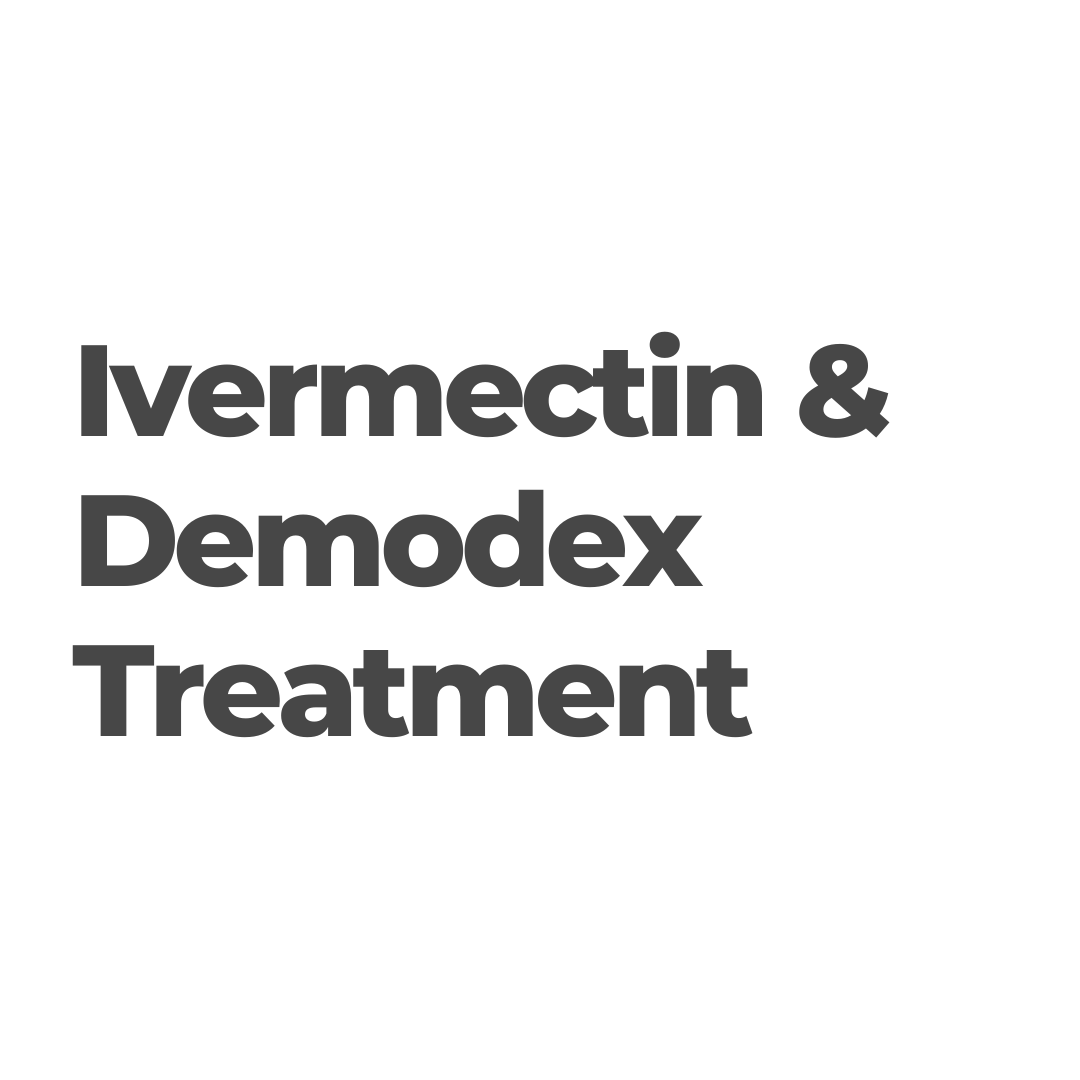Demodex Mites
Demodex, the ectoparasitic mites residing in various areas such as hair follicles, oil glands, eyelash follicles, and meibomian glands, play a crucial role in eye health.
Moreover, the impact of demodex infestation and dry eye disease on quality of life is substantial, affecting nearly 80% of individuals with these conditions.
- Persistent ocular irritation is a prevalent complaint among demodex and dry eye disease patients, lasting for over 4 years in the majority of cases.
- Patients often express cosmetic worries, including redness and difficulties with makeup application.
- Impaired night-time driving.
This underscores the significance of addressing demodex and dry eye disease for improved overall well-being.
Demodex mites are not harmful to most people, but they can cause problems for people with dry eyes. Understanding the relationship between Demodex and dry eye disease is pivotal for comprehensive eye care.
Who is at risk of Demodex Blepharitis?
While commonly associated with aging, Demodex can be found in individuals of all ages, including paediatric populations. Astonishingly, an estimated 55 to 58% of eyecare patients exhibit Demodex blepharitis, underscoring its prevalence with a potential 25 million cases. This phenomenon is not limited by gender, age, or ethnicity, as both males and females across all races may host Demodex.
However, the prevalence of Demodex is significantly linked to age, with an 84% presence by age 60 and reaching 100% in individuals aged 70 and older.
Factors contributing to Demodex infestation encompass conditions such as cancer or HIV, immunosuppressive therapy, and specific risk factors like rosacea, fair skin, diet patterns (spicy foods, alcohol, and hot beverages), emotional stress, environmental conditions (sunlight exposure, sudden temperature changes), and smoking.
Notably, many of these risk factors coincide with triggers for rosacea, suggesting a strong correlation between Demodex overpopulation and rosacea.
Demodex Mite Types
Demodex Blepharitis refers to a common form of blepharitis that involves a Demodex mite infestation. Two primary types of Demodex mites are known to inhabit humans:
- Demodex folliculorum is primarily found at the base of the eyelashes and eyelash follicles (anterior blepharitis). They feed on epithelial cells around the hair follicles, which may also cause trichiasis (inward deviation of eyelashes) or madarosis (eyelash loss).
- Demodex brevis burrow into the meibomian glands, which are modified sebaceous glands, where the feed upon meibum (posterior blepharitis). This burrowing physically obstructs the gland orifices leading to meibomian gland hyperplasia and meibomian gland dysfunction, with blockage further exacerbated by the accumulation of the mites’ waste.
Demodex Blepharitis Pathophysiology
- Demodex folliculorum and Demodex brevis lay their eggs in lash follicles and meibomian glands, respectively, which also leads to obstruction of both structures. In addition to the mechanical damage caused by physical biting and obstruction, the mites also elicit an inflammatory response.
- Demodex mites also lack a fully developed excretory system. As a result, they regurgitate material containing proinflammatory digestive enzymes, leading to irritation of the lid margin and disruption of the tear film and ocular surface. This waste, when mixed with debris and Demodex eggs, forms a waxy, cylindrical coating known as cylindrical dandruff or lash collarettes. These collarettes, a hallmark sign of Demodex-related dry eye, contribute significantly to inflammation, affecting both lashes and the lid margin.
- The chitin-based exoskeleton of Demodex triggers a foreign body response, stimulating the formation of a granuloma around the mite. This granulomatous response can result in the development of chalazions, particularly in cases involving Demodex brevis, which are commonly found within the meibomian glands.
- These mites also serve as potential carriers for bacteria, including Streptococcal and Staphylococcal species residing on their surface, and Bacillus oleronius within their abdomen. The presence of these bacteria can trigger inflammation leading to blepharitis.
- Demodex is believed to contribute to a Type IV hypersensitivity reaction. Proteins within the mites and their waste are thought to stimulate a delayed, cell-mediated response, fostering chronic inflammation. Even after their demise, Demodex remains disruptive, releasing proinflammatory proteins and bacteria. These intricate mechanisms collectively induce inflammation, giving rise to conditions like blepharitis, meibomian gland dysfunction, and eyelash disruption. If this inflammation extends to the conjunctiva and cornea, it can escalate into conjunctivitis and keratitis.

Signs and Symptoms of Demodex Blepharitis
Demodex Blepharitis manifests through mechanical and inflammatory damage to the lid margin and lashes, causing ocular surface irritation and dysfunction.
Key symptoms include:
- Foreign body sensation.
- Burning, stinging.
- Epiphora.
- Transient blurred vision.
- General irritation.
All these symptoms stem from physical biting, digestive enzyme use, and gland obstruction by Demodex mites.
Characteristic signs of Demodex Blepharitis involve:
- Waxy, cylindrical collarettes around lash bases, indicating Demodex folliculorum presence.
- Meibomian gland dysfunction, denoting Demodex brevis infestation.
Complications may include:
- Recurrent hordeola.
- Recurrent chalazion.
- Lid margin erythema.
- Lid margin telangiectasia, often associated with ocular rosacea.
- Chronic inflammation may lead to lid notching or scalloping.
- Eyelash disruptions such as madarosis, trichiasis, and distichiasis.
- Blepharoconjunctivitis and blepharokeratitis, can lead to significant inflammation extending onto the conjunctiva and cornea.
Demodex Blepharitis and Dry Eyes
Dry eyes are a condition in which the eyes do not produce enough tears. This can lead to symptoms such as burning, itching, and irritation. Demodex mites can worsen dry eye symptoms by:
- Inflammation of the eyelids: Demodex mites can release enzymes that irritate the eyelids and make them more susceptible to infection.
- Producing waste products: Demodex mites produce waste products that can irritate the eyes and make them more dry.
- Spreading bacteria: Demodex mites can carry bacteria that can cause infections in the eyes.
Treatment for Demodex Blepharitis at our Clinic
Demodex, being resilient parasitic arthropods, pose a challenge for treatment. Conventional antibacterial, antiviral, and antifungal remedies prove ineffective against them. Notably, they exhibit resistance even to broad-spectrum antimicrobial agents like 75% alcohol and 10% povidone-iodine. This resistance complicates the management of conditions related to Demodex, such as dry eye disease.
However, there are a number of treatments available for demodex mites and dry eyes at our clinic.
In-Office Tea Tree Oil Treatment
Terpinen-4-ol, the key component in Tea Tree Oil (TTO), possesses a wide range of antimicrobial and antiseptic properties, including antibacterial, antiviral, antifungal, and anti-inflammatory capabilities. Most notably, it exhibits demodicidal properties, making it effective against demodex mites associated with dry eye disease. Terpinen-4-ol acts as an acetylcholinesterase inhibitor, leading to the demise of these mites and compelling their evacuation from follicles and sebaceous glands.
Moreover, TTO facilitates the removal of collarettes and cleansing of lashes. However, it's essential to be mindful of potential side effects such as ocular irritation, contact dermatitis, and allergic responses, which are more pronounced at higher concentrations. Consequently, dosing regimens are carefully tailored to balance efficacy and safety.
Commonly employed at-home treatments involve 2% and 5% TTO administered twice daily, while higher concentrations, like 50%, (one month treatment weekly) are typically reserved for in-office treatments due to an elevated risk of side effects.
TTO is available in various forms, such as foam cleansers, scrubs, and wipes, offering flexibility based on optometrists recommendations and patient preferences. Choose the most suitable form for effective management, keeping in mind the concentration and potential side effects associated with TTO therapy.
Optimal treatment duration for demodex-related conditions, such as dry eye disease, varies and lacks a universally defined standard. While treatment spans from weeks to an unspecified duration, a minimum six-week regimen is advised. This duration aligns with two complete life cycles of demodex mites, optimizing therapeutic efficacy.
In-Office Debridement
In-office debridement plays a crucial role in addressing Demodex-related issues and dry eye disease. Microblepharoexfoliation, a highly effective complement to TTO treatment, focuses on the removal of debris from the lid margin and lashes. The sponge is soaked in a lid-cleaning solution containing tea tree oil, and then applied to the lid margin for approximately 20-30 seconds. The eyes are rinsed with saline at the end to remove any debris or solution.
In-office microblepharoexfoliation, facilitated by devices like NuLids PRO (NuLids) or BlephEx (Blephex), or at-home devices like NuLids (NuLids), proves highly effective in improving Demodex blepharitis. This procedure helps remove inflammatory debris and collarettes, simultaneously reducing the population of Demodex mites and bacteria.
Intense Pulse Light Therapy (IPL)
In my professional recommendation, an effective and versatile treatment for Dry Eye Disease and its associated conditions, particularly Demodex blepharitis, is IPL.
IPL employs high-intensity polychromatic light (400-1200 nm) to target tissues, making it a comprehensive solution for various aspects of Demodex blepharitis. This treatment is especially noteworthy for its democidal properties, as the chromophores in Demodex exoskeletons absorb the energy from pulsed light, leading to rapid heating and coagulative necrosis, ultimately causing the demise of the mite.
Furthermore, IPL therapy offers additional benefits by reducing bacterial presence and inflammation through photobiomodulation. It has demonstrated effectiveness in alleviating signs and symptoms of Meibomian Gland Dysfunction and promoting the regression of proinflammatory telangiectatic blood vessels associated with ocular rosacea. Given the frequent co-occurrence of Meibomian Gland Dysfunction and ocular rosacea with Demodex blepharitis, IPL emerges as an optimal treatment choice.
IPL treatment for Meibomian Gland Dysfunction and dry eye is well-established and endorsed, with the OptiLight IPL device being FDA-approved for these specific indications. A recommended treatment protocol for Demodex blepharitis typically involves four sessions, spaced 3-4 weeks apart, providing a structured approach to achieving positive outcomes.
Studies have shown that compared with the tea tree oil group, the IPL group had faster improvement. The average number of Demodex decreased significantly after both one and three months of IPL and the overall Demodex eradication rate was 100% compared to 75% for the tea tree oil group.
Omega-3 Supplements
Consider incorporating adjunct therapies to address concurrent ocular surface conditions like dry eye disease, particularly when dealing with issues like demodex infestation.
Omega-3 fatty acid supplements are strongly recommended for their proven efficacy in alleviating the signs and symptoms of meibomian gland dysfunction and reducing inflammation.
Opt for a high-quality re-esterified, triglyceride-based supplement with a balanced 3:1 EPA to DHA ratio and a minimum of 2 grams of combined EPA and DHA. This specific formulation has demonstrated effectiveness in improving MGD and can be a valuable addition to your treatment plan for demodex-related dry eye conditions.
Xdemvy, coming soon to Australia?
Xdemvy is currently available in the United States at the moment. Visit the "Xdemvy FDA annoucement blog" for more in-depth overview.
Xdemvy, an innovative lotilaner ophthalmic solution, is specifically designed to combat Demodex, the microscopic mites residing in eyelash follicles and meibomian glands, contributing to Dry Eye Disease. By inhibiting parasite-specific GABA-Cl channels, Xdemvy induces mite paralysis and eradication.
In two pivotal studies, Xdemvy has demonstrated remarkable efficacy in alleviating symptoms associated with Demodex-related dry eye disease over a six-week BID dosing period:
- Mite Eradication: 60% of patients achieved complete mite eradication, defined as 0 mites per lash.
- Collarette Reduction: 50% of patients achieved complete collarette cure (≤2 collarettes on the upper lid), with clinically meaningful improvement observed in 85% of patients (≤10 collarettes).
- Improvement in Lid Erythema: 25% of patients displayed erythema cure, defined as grade 0 or no lid margin erythema on a 0 to 3 scale.
Moreover, Xdemvy boasts a high level of tolerability, with 90% of patients reporting the solution to be neutral to very comfortable. The most common side effect, stinging and burning upon instillation, is typically mild and transient, affecting only 10% of patients. This ground-breaking treatment has earned FDA approval as the first and only indicated therapy for Demodex-associated Dry Eye Disease, establishing Xdemvy as the definitive first-line solution for this condition.
Reference:
Sabeti, S., Kheirkhah, A., Yin, J., & Dana, R. (2020). Management of meibomian gland dysfunction: a review. Survey of ophthalmology, 65(2), 205–217. https://doi.org/10.1016/j.survophthal.2019.08.007
Murphy, O., O'Dwyer, V., & Lloyd-McKernan, A. (2018). The efficacy of tea tree face wash, 1, 2-Octanediol and microblepharoexfoliation in treating Demodex folliculorum blepharitis. Contact lens & anterior eye : the journal of the British Contact Lens Association, 41(1), 77–82. https://doi.org/10.1016/j.clae.2017.10.012
Zhang, X., Song, N., & Gong, L. (2019). Therapeutic Effect of Intense Pulsed Light on Ocular Demodicosis. Current eye research, 44(3), 250–256. https://doi.org/10.1080/02713683.2018.1536217






